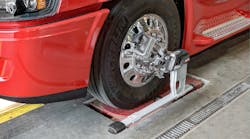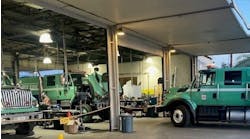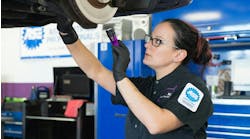Vehicle Maintenance Reporting Standards (VMRS) codes continually reflect the many changes that occur in equipment maintenance. ATA’s Technology & Maintenance Council (TMC) works directly with vehicle manufacturers, parts manufacturers, fleets, and software firms when adding new codes to the VMRS standard—that’s what keeps VMRS relevant and vital for all users. VMRS is a structured coding system that provides the discipline to operate in today’s point-and-click world.
Since 1970, the purpose of VMRS has been to provide a vital communication link between maintenance personnel, computers, and management. It establishes a “universal” language for fleets, original equipment manufacturers (OEMs), industry suppliers, computers, and those people whose responsibility it is to specify, purchase, operate, and maintain equipment.
Developed by and for equipment users under the auspices of the American Trucking Associations, VMRS provides the discipline necessary for industry segments to communicate with each other. VMRS is the shorthand of maintenance reporting, eliminating the need for extensive written communications with all the inherent problems of miscommunication normally associated with the written word.
TMC continually includes new VMRS codes for updated and emerging technologies. In 2002, collision avoidance system codes were added. In 2006, lane departure and exhaust aftertreatment codes were added to the VMRS universe.
Many times, new codes are added prior to the release of technology. For example, Selective Catalytic Reduction System (SCR) codes were added in 2008, two years prior to being mandated. TMC worked with several OEMs to develop the codes and have them ready for general use.
In recent months, lane keep assist and other Advanced Driver Assistance System (ADAS) codes were added to VMRS, as well as codes for a fifth wheel electronic sensor coupling system. VMRS codes were also added to reflect the newer antifreeze compounds found in today’s equipment. These include organic acid technology (OAT), nitrite-free OAT, and hybrid OAT types of coolant.
There are also codes for newer aerodynamic devices such as wheel covers and splash guards, as well as for trailer rear tail extender assemblies and trailer walking floor assemblies.
TMC is currently collaborating with several manufacturers on developing VMRS codes for electric vehicle (EV) components. To date, there are more than 380 EV codes in the VMRS Code Key 33 Component Code database. And that number is increasing on a regular basis. All EV codes will contain “Electric Vehicle” in the part description, making it easier to differentiate EV parts from traditional vehicle components.
It’s vital to have the manufacturing community’s support and assistance when entering codes for new and emerging technologies since adding new VMRS codes is truly a collaborative effort. As new technologies are introduced, TMC will continue to make sure that VMRS contains the codes needed for implementation and general use by all concerned.
There’s more to VMRS than the nine-digit Component Code; there are also Code Keys for describing asset types, labor functions, and part failures, among others. A new Code Key was recently added for recording tire position using four data points: axle type, axle sequence, left/right position, and inner/outer/center orientation. The new Code Key request came from key industry stakeholders who decided that implementing VMRS is an important part of their business model.
There have been a multitude of changes in the trucking and transportation industry in the past fifty years, and VMRS has been there as an important part of equipment maintenance. Fleet managers have always relied on VMRS to provide them with the best method for producing maintenance reports. It is imperative that VMRS contains codes for the latest technologies.
Equipment maintenance has seen a lot of changes over the years, but VMRS is still the tried-and-true method of tracking maintenance repairs. VMRS will continue to chart new horizons as equipment maintenance continues to evolve. VMRS will be there for future generations as it has for the past 50 years.



